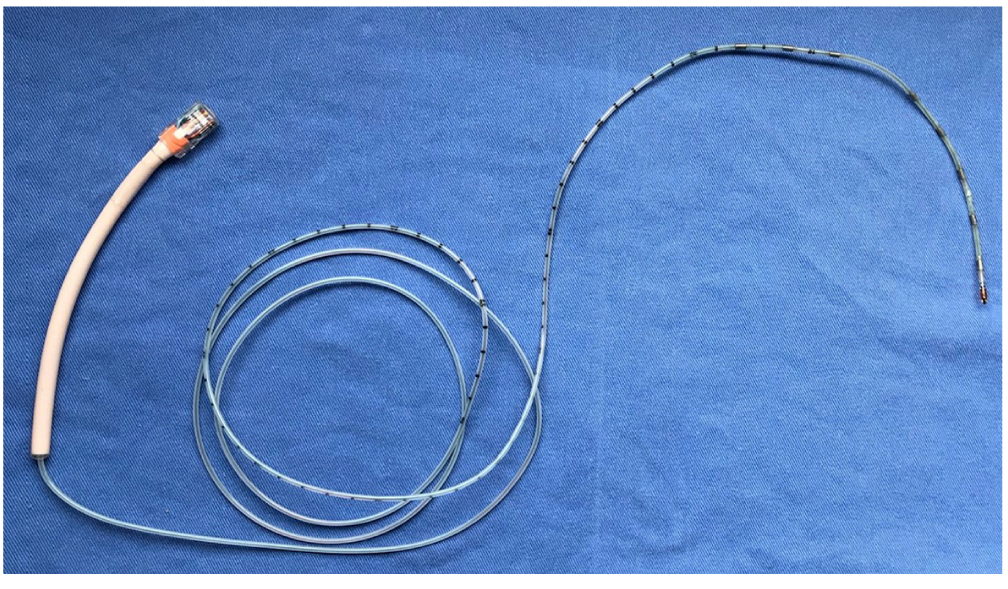Actualización en la interpretación de la medición del pH e impedanciometría
DOI:
https://doi.org/10.22516/25007440.608Palabras clave:
Monitoreo de pH-impedanciometría, enfermedad por reflujo gastroesofágico, inhibidor de bomba de protonesResumen
La enfermedad por reflujo gastroesofágico (ERGE) se define como el tránsito anormal del contenido gástrico hacia el esófago, que se da por una alteración de la barrera antirreflujo, causando síntomas o complicaciones. Para su correcto diagnóstico y abordaje terapéutico, se requiere de la integración de hallazgos clínicos, endoscópicos y monitorización del pH esofágico en 24 horas con o sin impedanciometría, la cual debe ser realizada con especificaciones técnicas, y su interpretación debe basarse en la mejor evidencia clínica disponible, con el objetivo de tener diagnósticos precisos que permitan tomar las mejores decisiones con los pacientes.
Recientemente, en el Consenso de Lyon se han incorporado nuevas directrices para el diagnóstico de ERGE por monitorización de pH esofágico, las cuales se revisan en este artículo.
Descargas
Referencias bibliográficas
Vakil N, van Zanten SV, Kahrilas P, Dent J, Jones R; Global Consensus Group. The Montreal definition and classification of gastroesophageal reflux disease: a global evidence-based consensus. Am J Gastroenterol. 2006;101(8):1900-20; quiz 1943. https://doi.org/10.1111/j.1572-0241.2006.00630.x
Patti MG. An Evidence-Based Approach to the Treatment of Gastroesophageal Reflux Disease. JAMA Surg. 2016;151(1):73-8. https://doi.org/10.1001/jamasurg.2015.4233
Cesario S, Scida S, Miraglia C, Barchi A, Nouvenne A, Leandro G, Meschi T, De’ Angelis GL, Di Mario F. Diagnosis of GERD in typical and atypical manifestations. Acta Biomed. 2018;89(8-S):33-39. https://doi.org/10.23750/abm.v89i8-S.7963
Yadlapati R, Pandolfino JE. Personalized Approach in the Work-up and Management of Gastroesophageal Reflux Disease. Gastrointest Endosc Clin N Am. 2020;30(2):227-238. https://doi.org/10.1016/j.giec.2019.12.002
Gyawali CP, Kahrilas PJ, Savarino E, Zerbib F, Mion F, Smout AJPM, Vaezi M, Sifrim D, Fox MR, Vela MF, Tutuian R, Tack J, Bredenoord AJ, Pandolfino J, Roman S. Modern diagnosis of GERD: the Lyon Consensus. Gut. 2018;67(7):1351-1362. https://doi.org/10.1136/gutjnl-2017-314722
Chen J, Brady P. Gastroesophageal Reflux Disease: Pathophysiology, Diagnosis, and Treatment. Gastroenterol Nurs. 2019;42(1):20-28. https://doi.org/10.1097/SGA.0000000000000359
El-Serag HB, Sweet S, Winchester CC, Dent J. Update on the epidemiology of gastro-oesophageal reflux disease: a systematic review. Gut. 2014;63(6):871-80. https://doi.org/10.1136/gutjnl-2012-304269
Páramo-Hernández DB, Albis R, Galiano MT, de Molano B, Rincón R, Pineda-Ovalle LF, Rodríguez A, Otero-Regino W, Hani A, Sabbagh LC, Sandoval-Salinas C, Sánchez-Pedraza R. Prevalencia de síntomas del reflujo gastroesofágico y factores asociados: una encuesta poblacional en las principales ciudades de Colombia. Rev Col Gastroenterol. 2016;31(4):337-346.
Roman S, Gyawali CP, Savarino E, Yadlapati R, Zerbib F, Wu J, Vela M, Tutuian R, Tatum R, Sifrim D, Keller J, Fox M, Pandolfino JE, Bredenoord AJ; GERD consensus group. Ambulatory reflux monitoring for diagnosis of gastro-esophageal reflux disease: Update of the Porto consensus and recommendations from an international consensus group. Neurogastroenterol Motil. 2017;29(10):1-15. https://doi.org/10.1111/nmo.13067
Hong SK, Vaezi MF. Gastroesophageal reflux monitoring: pH (catheter and capsule) and impedance. Gastrointest Endosc Clin N Am. 2009;19(1):1-22, v. https://doi.org/10.1016/j.giec.2008.12.009
Hobbs P, Gyawali CP. The role of esophageal pH-impedance testing in clinical practice. Curr Opin Gastroenterol. 2018;34(4):249-257. https://doi.org/10.1097/MOG.0000000000000441
Ribolsi M, Giordano A, Guarino MPL, Tullio A, Cicala M. New classifications of gastroesophageal reflux disease: an improvement for patient management? Expert Rev Gastroenterol Hepatol. 2019;13(8):761-769. https://doi.org/10.1080/17474124.2019.1645596
Neto RML, Herbella FAM, Schlottmann F, Patti MG. Does DeMeester score still define GERD? Dis Esophagus. 2019;32(5):doy118. https://doi.org/10.1093/dote/doy118
Mainie I, Tutuian R, Shay S, Vela M, Zhang X, Sifrim D, Castell DO. Acid and non-acid reflux in patients with persistent symptoms despite acid suppressive therapy: a multicentre study using combined ambulatory impedance-pH monitoring. Gut. 2006;55(10):1398-402. https://doi.org/10.1136/gut.2005.087668
Aziz Q, Fass R, Gyawali CP, Miwa H, Pandolfino JE, Zerbib F. Esophageal disorders. Gastroenterology. 2016;150(6):1368-79. https://doi.org/10.1053/j.gastro.2016.02.012
Savarino V, Marabotto E, Zentilin P, Furnari M, Bodini G, De Maria C, Tolone S, De Bortoli N, Frazzoni M, Savarino E. Pathophysiology, diagnosis, and pharmacological treatment of gastro-esophageal reflux disease. Expert Rev Clin Pharmacol. 2020;13(4):437-449. https://doi.org/10.1080/17512433.2020.1752664
Hani de Ardila Albis. Pruebas diagnósticas en enfermedad por reflujo gastroesofágico (ERGE). Rev Col Gastroenterol. 2009;24(2):210-222.
Helgadottir H, Bjornsson ES. Problems Associated with Deprescribing of Proton Pump Inhibitors. Int J Mol Sci. 2019;20(21):5469. https://doi.org/10.3390/ijms20215469
Lødrup AB, Reimer C, Bytzer P. Systematic review: symptoms of rebound acid hypersecretion following proton pump inhibitor treatment. Scand J Gastroenterol. 2013;48(5):515-22. https://doi.org/10.3109/00365521.2012.746395
Waldum HL, Qvigstad G, Fossmark R, Kleveland PM, Sandvik AK. Rebound acid hypersecretion from a physiological, pathophysiological and clinical viewpoint. Scand J Gastroenterol. 2010;45(4):389-94. https://doi.org/10.3109/00365520903477348

Descargas
Publicado
Cómo citar
Número
Sección
Licencia
Aquellos autores/as que tengan publicaciones con esta revista, aceptan los términos siguientes:
Los autores/as ceden sus derechos de autor y garantizarán a la revista el derecho de primera publicación de su obra, el cuál estará simultáneamente sujeto a la Licencia de reconocimiento de Creative Commons que permite a terceros compartir la obra siempre que se indique su autor y su primera publicación en esta revista.
Los contenidos están protegidos bajo una licencia de Creative Commons Reconocimiento-NoComercial-SinObraDerivada 4.0 Internacional.

| Estadísticas de artículo | |
|---|---|
| Vistas de resúmenes | |
| Vistas de PDF | |
| Descargas de PDF | |
| Vistas de HTML | |
| Otras vistas | |














